Apriltaylor
Jr. Member
- Joined
- May 21, 2018
- Messages
- 81
- Reaction score
- 160
- Golden Thread
- 0
- Location
- Pilot mountain, nc
- Primary Interest:
- All Treasure Hunting
Upvote
0
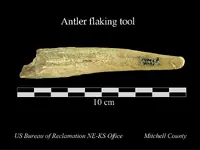
A friend has several complete knapping kits recovered from long ago. They each would include the antler for pressure flaking and often a round piece of a flint spall with the soft cortex on.Included in the kits were preforms and rocks for abrading the edges and hammer stones for the larger reduction. I am sure each kit was different for the area you lived and the available billets from animals.
I do have a flint pressure flakingg core. If not have seen it in the kits I would have left it laying in the dirt.
MonsterRack is an expert in tool making and reproduction work also.
That is really interesting. I am not very good at making anything with tools at all. But, I did make this Clovis replica from raw chert, with a process that was recorded during the 19th century, and that has not been seen used in the modern age. It is a process that was recorded by Franklin Cushing, from maybe the 1870's. I even used the process to create the flute. All of the flaking was done with the tip of a common deer tine - no billet needed.
Also, I taught the process to a number of people since December of 2017. One archaeologist learned, and he took the flaking results to compare to collections, both paleo and archaic. And, he told me with great excitement that the types of flakes being produced - even the overshot flakes - are a type known as "split negative cone" flakes, which he said are not known experimentally to modern science, except in one single instance. And, that instance has nothing to do with this technology. Yet, he said that there is widespread evidence of the same thing being present in both archaic, and paleo, assemblages. And, to their amazement, I produced the same results. He said that in collaborating with other archaeologists, no one has ever seen anything like it. There are quite a few archaeologists who are really excited about this development. But, he also told me that there are some people who are really going to hate me. Lol! The truth rolls on! No good deed goes unpunished!
That is really cool. You were able to get overshot with pressure flaking. I imagine a lot depends upon the material?
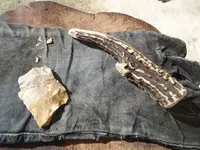
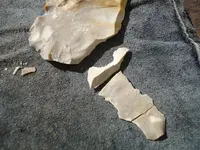
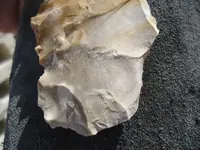

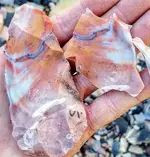
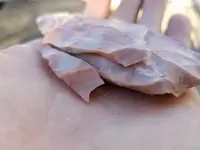
The baton technique was used by Australian aborigines to chip glass, and was developed by European academics, in the 1930's, as a hypothetical way to explain "secondary flaking". Since then, many academics have pointed out that there is insufficient evidence to suppose that the same technologies were used in the Americas. Prior to that, the predominant belief was that indirect percussion was used for secondary flaking. Only, as Holmes wrote, in 1919, it was not well understood. Today, one can see all of the people on the copper percussion bandwagon, which certainly is a departure from authenticity. So, we still have a long ways to go, in terms of understanding authenticity in the Americas.
